Introduction
A beloved old feature returns to the MacBook Pro, and it starts with M-a-g. If you guessed MagSafe, we have disappointing news, but if you said “Magic Keyboard,” we have the teardown for you. It’s the all-new, butterfly-less, 16-inch MacBook Pro, and we’re here to turn it inside-out—from the fancy new thermals to those thumping loud speakers. Be sure to read our blog post for our initial take, and then meet us back here for the full teardown.
Twitchy for more teardowns? Follow us on Facebook, Instagram, and Twitter for all the latest teardown news. For news delivered, sign up for our newsletter.
Tools
-
-
The modern MacBook Pro ranks among Apple's most divisive devices, but that wasn't always the case. We'll keep our fingers crossed that this new model represents a return to form. Specs on our teardown
victimunit include: -
16" LED‑backlit IPS Retina display with True Tone, 3072 × 1920 resolution (226 ppi)
-
2.6 GHz 6‑core Intel Core i7 (Turbo Boost up to 4.5 GHz), paired with an AMD Radeon Pro 5300M
-
16 GB of 2666 MHz DDR4 SDRAM
-
512 GB SSD
-
100 Wh battery
-
Six-speaker sound system and high-performance microphone array
-
-
-
Stacked up like pancakes, you'll notice the new MacBook Pro is noticeably bigger (and just a hair thicker) than the latest 15" model. It actually compares well with the 2015 model—in size that is, not port selection.
-
With the 16" Pro back-to-back against the 2015 Pro, you're almost seeing double ... until you look closer. The display hinge has changed, and the old Pro's keys peek out just a bit more.
-
In a similar game of "spot the differences" between the two 2019 MacBook Pros, the 16" version gets:
-
A physical Esc key, separated from the Touch Bar
-
A matte finish on the Touch ID/power button, matching the rest of the keys
-
A Touch Bar shortened in length by about 19 mm
-
Inverted-T arrow keys, all half-sized
-
If you zoom and enhance the left grille, you can see the camouflaged holes for the improved triple-mic. And now, you can never un-see it.
-
-
-
Time for us to do what we do best: jam tools into things and see what comes apart.
-
Let's start with some keycaps. Remember the iMac's Magic Keyboard? It's a well-liked, reliable design that Apple calls the "core technology" for the redesigned keyboard in this new machine.
-
That might be understating it slightly: side by side, we're hard pressed to spot any differences. Scissor switches, keycaps... There's slightly less space surrounding these new keys, and pundits will celebrate those reconfigured arrow keys—but everything else looks nigh identical.
-
To round out the comparison, here's a third image showing the controversial (and notoriously temperamental) "butterfly" switch in the 15" MacBook Pro released just a few months ago.
-
But why stop there? Here's a shot of the scissor switch in the "unibody" 2012 MacBook Pro design...
-
...and the scissor in Apple's last laptop with a "good" keyboard, the 2015 MacBook Pro with Retina display.
-
-
-
What's underneath the scissor mechanism? Hey, we'll ask the questions here—you just finish taking this thing apart.
-
Wait, scratch that—reverse it.
-
Here's a look at the "Apple-designed rubber dome that stores more potential energy for a responsive key press."
-
Beneath that, a backlight assembly with an interesting pattern—more on that later.
-
And bordering all that, a thin black gasket—presumably to stop the bright bits from bleeding out past the edge of the key.
-
Compared once again with the desktop Magic Keyboard:
-
The two scissor mechanisms look nearly identical. The old Magic scissor is ever-so-slightly thicker (1.6 vs 1.38 mm).
-
-
-
Despite the differential in thickness, these keyboards look so similar that we're tempted to mix dark Magic with light and see what happens...
-
Yes, what you're looking at is a 2015 white Magic Keyboard keycap on a 16" MacBook Pro keyboard and scissor. It works!
-
The old Magic command key is smaller (hence the larger gap around the key) and thicker than the new one.
-
Not every single key is interchangeable, and the old Magic keys don't have transparent lettering for the backlight. So don't get too excited yet, keyboard modders.
-
-
-
Having finished poking at the keyboard (for now), let's de-lid the chassis and look inside.
-
Apple already showed us this angry owl in a GIF from their press release, but what we haven't seen yet are high-energy X-rays passing through the owl to show us what's behind its frustrated facade.
-
The X-rays make it even angrier! Run away! Luckily our friends at Creative Electron are taking all the risk here—we'll resume disassembly after things calm down.
-
-
-
Torx screws, schmorx screws—our Marlin driver set does it all. (Although come to think of it, we've yet to find a use for the schmorx bits.)
-
Even with this computer open, we're faced with more mystery—a masked MacBook! Is it you, Bruce?
-
Apple touts major advancements in this MacBook Pro's thermal design, and says this heat sink is 35 percent bigger. (We'd have guessed 34, but let's take their word for it.)
-
We also found some upgraded hardware covering what we presume to be fast new GDDR6 chips—a copper shield and a couple aluminum thermal pads.
-
-
-
We can't stop thinking of these logic boards as mustache-shaped, so let's take the anthropomorphic analogy way way too far and comb through the bristles. Here's what sticks to our comb:
-
9th-generation Intel Core i7-9750H 6-core processor
-
16x Micron MT40A1G8SA-075 8 Gb DDR4 SDRAM (16 GB total)
-
AMD Radeon Pro 5300M mobile GPU
-
4x Samsung K4Z80325BC-HC14 8 Gb GDDR6 RAM (4 GB total)
-
Toshiba TSB4227VE8434CHNA11926 and TSB4227VE8437CHNA11926 flash storage (512 GB total)
-
Apple T2 APL1027 339S00536 coprocessor
-
Intel JHL7540 Thunderbolt 3 controller
-
-
-
We continue combing for silicon. Silicon comes from sand. Have we been doing this all wrong?
-
Intel SR40F platform controller hub
-
Texas Instruments CD3217B12 (likely power controllers)
-
338S00267-A0 (likely Apple PMIC)
-
Texas Instruments TPS51980B power controller
-
339S00610 (likely Apple Wi-Fi/Bluetooth module)
-
Intersil 6277 PWM modulator
-
Renesas 225101C
-
-
-
With the motherboard out of the way, we can take a peek at the rest of the improved thermal design.
-
Pardon us while we vent for a minute. Stacked atop its slightly-older sibling (the 15-inch 2019 model), the new MacBook Pro has some noticeably larger exhaust holes.
-
This may sound like a bunch of hot air, but all these cool improvements allegedly allow this 16" Pro to sustain up to 12 more watts during intensive workloads than the previous design.
-
-
-
We slowly peel away the keyboard backlight, hoping to find Magic underneath.
-
The backlight assembly consists of a flexible diffuser, which carries light from LEDs along the edges. Flexible diffusers are common, but this one looks specially etched, possibly to maximize brightness and evenness.
-
Underneath the backlight, we spot some Pentalobe P2 screws along the edges of the metal keyboard frame. Could it be? Can we unscrew this thing to swap a busted key after a Dorito-fueled type-a-thon?
-
Nooooo! Once again, the keyboard assembly is riveted down. Though the switches are likely less vulnerable to crumbly assailants, the keyboard itself isn't any more repairable than the Butterfly boards.
-
It's basically 2016 all over again: we've got a new keyboard married to a non-serviceable design, with only Apple's word that it "won't break." And this one isn't even a part of the Keyboard Service Program, so ... : /
-
The one glimmer of hope is that this new keyboard design is extremely similar to past Apple keyboards that have mostly withstood the test of time.
-
Refusing to leave this keyboard interaction empty-handed, we pry up the keyboard as much as we can to get a glimpse at what makes it click. We are rewarded with a look at the flexible PCB layer sandwiched between the key and the metal backplate where the button presses happen ... but no magic.
-
-
-
Now that all our keyboard questions are laid to rest, we can move on to the rest of the bits still lying around.
-
First up, these fancy new
XL-Earpodsspeakers with an extended enclosure, and opposed woofers on the top and bottom. -
We aren't as sure about the elongated enclosure, but our best guess is that the new shape redirects sound to improve its quality. Maybe extra volume was needed to accommodate the second woofer?
-
Next, another sound upgrade: a "high performance" three-mic array. It's laid out similarly to the three-mic array in the 2018 MacBook Air, but looks a little beefier, which could mean these are higher-quality mics.
-
Finally, the lithium powerhouse that's probably drawing a suspicious glare from the FAA: Apple's 99.8 Wh battery (11.36 V, 8790 mAh).
-
That's the largest battery we've ever seen in a MacBook—a 4.8 Wh increase over the 17" MacBook Pro, and a huge 16.2 Wh increase over the latest 15" MacBook Pro.
-
Where did this extra capacity come from? Here, Apple pulled an iPhone 11—each battery cell looks identical to its predecessor, but measures 0.8 mm thicker on average.
-
-
-
We have to fully remove the display to investigate, but it turns out there's a new sensor facing the left-side hinge, and a magnet embedded in the hinge itself. The arrow on the magnet indicates alignment/polarity, which rotates in sync with the display.
-
Looks like Apple added a lid angle sensor. Why would they need that? Will this enable some cool new macOS feature?
-
Maybe. It could also be a clever way for Apple to trace the history of how the device was used if repairs are needed. For instance, if the display cables fray, Apple might want to know how much the display was adjusted, and how often.
-
-
-
Let's lay out our feelings for this new MacBook Pro:
-
Though the fancy new-old scissor mechanisms may be more durable than fragile butterflies, the whole keyboard assembly is still riveted in place.
-
The revamped thermal system is a welcome improvement to the notoriously hot-and-throttled Pro lineup.
-
The 99.8 Wh battery flies just under the FAA radar, pumping out 16.2 Wh more capacity than the most recent 15” model. With such a slight increase in case size, this capacity increase is surprising.
-
Despite the thumping new speakers, the podcast-quality mic array, and that giant screen, we can't help but feel that Apple can do better—especially after seeing Microsoft perform some real engineering magic to make its latest laptops more repairable. Here's hoping that the 2020 Pro lineup will really take our breath away.
-
For now though, the only thing left to do is give this thing a score.
-
-
-
The MacBook Pro 16" 2019 earns a 1 out of 10 on our repairability scale (10 is easiest to repair):
-
The trackpad can still be removed and replaced with very little drama.
-
Minor components are modular, but the processor, RAM, and flash memory are soldered to the logic board.
-
Glue and/or rivets secure the keyboard, battery, speakers, and Touch Bar, making those components a tricky fix.
-
The Touch ID sensor is the power switch and is locked to the logic board, greatly complicating repairs.
-
98 comments
almost no repair choices even though its a “pro” device
Gage -
What does being a “pro” device have to do with high repairability? “Pro” (itself more of a marketing term than a technical one) covers a proud range of areas. My sister is a pro graphic designer. She can do amazing things with illustrator or photoshop. She couldn’t tell you the next thing about processors or keyboard switches. For her the “pro” is what she can get done, not whether or not she can pop open the case. I’d be willing to lay odds thats true for a lot of people.
Repairability and pro are not connected. Some people value the former, some the later, some both, some neither.
kreutz -
In response to kreutz.
Hypothetical:
The Pro Graphic Designer is working on a commission that has taken several weeks. She has completed another days worth of work while out and about (the main point of a laptop, portability) someone drops liquid into the unit and it fails.
She could just redo the hours of work she just lost after her last backup (assuming she is someone who backs up religiously), however her deadline is tomorrow morning.
If she is using a true pro device she could drop by a computer repair place. Have them remove the SSD and recover the data. (in the macbook pro the SSD is soldered and even if it wasn’t the T2 chip prevents an external computer from reading it). If she is using the “PRO” device that apple sells she is $@$* out of luck and has to pull an all nighter to redo the work or loose the commission and be out all of the work she has done.
The ability to respond to unexpected situations damage, moisture, internal failure or design fault is what should set a PRO device apart.
@grantspedding The T2 does not prevent an external computer from reading the SSD. It is connected to one of the USB-C ports. There is a tool you can connect which will boot the T2 in DFU mode, prompt for the user’s password, tell the T2 to load the SSD, then dump all the data to an external drive.
Though I seriously wonder what professional would use a machine with no backups of in-flight work. Especially when it’s a Mac, and every macOS since 10.5 in 2007 has included Time Machine.
Zimmie -
For those suggesting that the moniker PRO doesn’t need to mean ‘repairable’, ‘accessible’, ‘non-complicated’, just consider any other PRO industry who relies hugely on repairability and the ability to get inside their devices / tools / instruments to keep them going as long as possible. A music producer wouldn’t throw away a 50 channel recording deck because 2 channels failed one day. A musician wouldn’t put their guitar in the dump because a machine head broke, $10 would get that musician back on stage again. A chef that finds their knife no longer sharp doesn’t look for the bin and a wholesale knife catalogue to buy a new one, they get a hone, or a stone and in 10 minutes their knife is possibly as good as new.
Apple have chosen this route for us and all to shave a few millimetres and grammes off laptops that Pro’s need to have as functional as possible. The moniker PRO is assumed to not only be top quality but top at saving the day when $@$* hits the fan and these machines are no longer that.
Between work I’ve done at an advertising agency, and a free lance photographer; you’d be amazed how many people market themselves as "Pros” but don’t have any backup of their work. Or they have a single external HDD which has all their work and accept that as their backup because time machine is running on it. The idea of “PRO” here is its Apple’s highest end laptop, and people can feel like calling themselves “pro” is justified. This has nothing to do with sensible backup strategies or thinking ahead to the what if scenario of a computer failure.
@zimmie So if the motherboard fails completely. ie when a mac gets a whiff of moisture in the air (hyperbole obviously) and the main board craps out and cannot enter DFU mode. What then?
@kreutz Additionally I would agree that the PRO moniker is massively overused/misused however all of Apple’s marketing really emphasizes specifically pro use.
As you said
“Repairability and pro are not connected. Some people value the former, some the later, some both, some neither.”
I would argue however that the pro you are referring to is a marketing gimmick just like “Mitsubishi Heavy Industries” in reference to normal domestic air conditioners. It has no right to claim the “Pro” moniker just as the air con has no right to claim “Heavy Industries”. So the people valuing PRO are quite literally valuing an empty marketing promise over something that could save their business when something goes wrong.
@grantspedding You CAN do that, but not always. For example, recovering data after damaging the laptop would be much harder since everything is encrypted. If the T2 chip is damaged in some way (by water, for example), then all of the data on there is unrecoverable.
The T2 chip is separate to my issues with this unit. Yes (very) theoretically you could recover from a damaged board. If you look at a comment above by Phillip Hue this requires several things including an intact T2 Chip and power rails to supply power.
However my big problem is the use of an ssd soldered to the motherboard. With a removable ssd it is possible to recover data even if the rest of the board has literal holes in it, components completely corroded off the board or if the USB-C ports are damaged (as in the comment above by Phillip specifies that these are required). My problem is with the way that apple have chosen to have absolutely no replaceable parts.
1 Ram chip fails… That’s a motherboard
1 Ssd chip fails… That’s a motherboard
A USB-C socket fails… That’s a motherboard
The wifi module fails… That’s a motherboard
anything goes wrong… That’s a motherboard
It’s a wasteful and anti consumer decision that cannot be justified
As a pro user, there’s definitely something to be said for repairability. However, as any pro should know, you never trust any one device or system completely. 99.9999% reliability still isn’t quite perfect, and I’ve experienced failures. That’s why I have backups. I NEVER rely on one storage medium. It’s much easier for me to quickly recover a file from Backblaze and work on another machine.. Price is also an important factor - it’s much less costly for me to quickly download a file and get back to work on a backup computer and FedEx my laptop to get repaired under warranty than it is to take time out of my day, pay out of pocket, and wait for a repair shop to recover my data. SSDs fail too, and being able to remove an SSD doesn’t do me much good if it’s what’s broken. Most of us work from servers or external drives regardless. Repairability matters, but my camera bag is already heavier than I’d like - if I have to sacrifice repairability for my back health, I’ll take it
well well. like 30 years of PRO models by every single other manufacturer.. well including apple till 2015, including Mac Pro. one of the best examples is HP Probook. it is clearly designed to be serviceable, you can swap the hard drive with 2 screws, you can clean fans, you can replace keyboard, etc. PRO means that you do not need to buy a new one as soon as you drop a few drops of liquid.
I can totally agree that a device’s performance is not affected by its repairability. But while you think that your device’s repairability has nothing to do with you, as you are not a professional repairer, the repairability of the device is very important when you run into a hardware issue. For example, a Thunderbolt 3 port on your MacBook is not working due to a malfunction of the Intel JHL Controller, that’s a motherboard right there, equivalent to nearly 2000 bucks, unless the repairer can perform micro soldering (Apple won’t do that). And who’s paying that fee? You, of course. Your screen cracks, another couple hundred bucks. Your keyboard breaks, no coverage program, bam, more money spent. In the end, you are suffering too. Apple’s gimmick is that they make things so unrepairable that your repairing fee is basically the same as buying another device (a tad bit cheaper), or that they simply don’t repair, so you are forced to buy more devices, and the more you buy, the more money Apple makes out of you.
I had my SSD cable broken last day, took out my SSD and connected it via USB, continued working until my new cable arrives in 3 three days. I do not have another laptop or PC. Being a pro does not mean you have multitudes of everything but being able to find quick solutions on the go. Now we can not do this with the new MacBook ‘pro’ . I upgraded my MacBook Pro (mid-2012) with an ssd and extended its life, but no more, now it is old and should get a new one. Stuck!
oh boy…why even allow it to be opened in the first place? rivets and glue just make this design worse.. I think you need to have a negative number for your review system- thx for the work on busting open these devices.
i wish they would just allow the batteries to be easily replaced at the very minimum
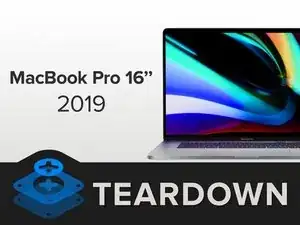

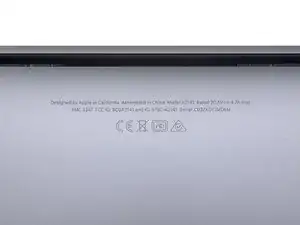
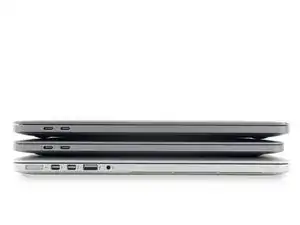

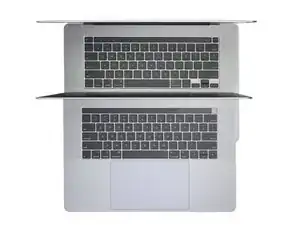
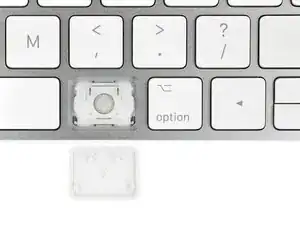
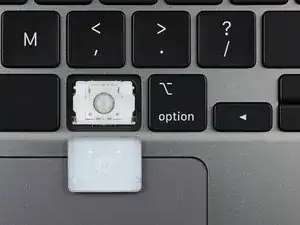
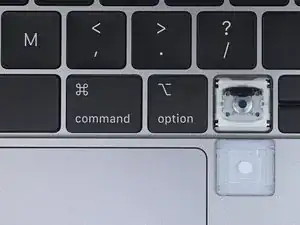

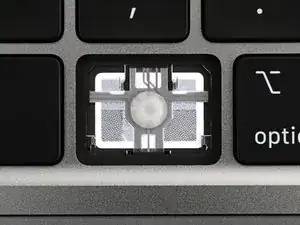
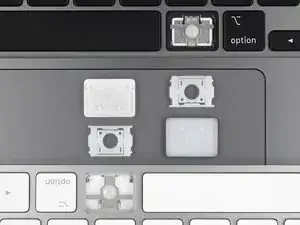

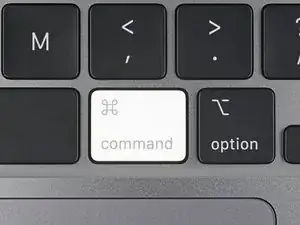
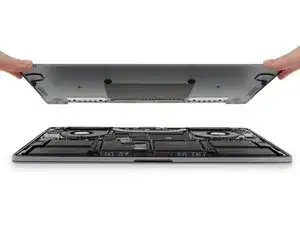
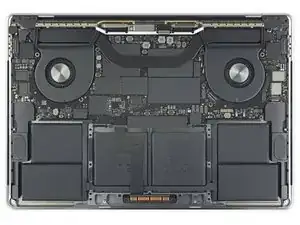
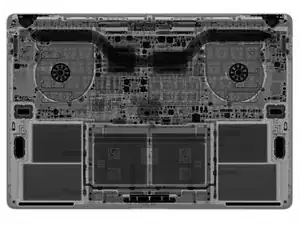

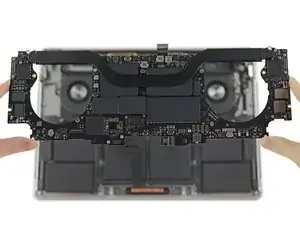
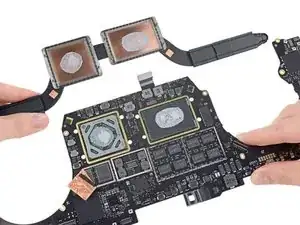
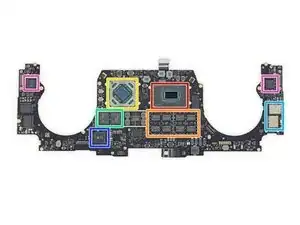
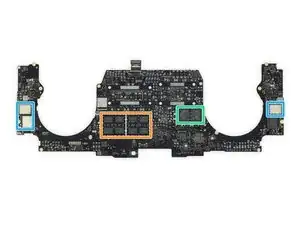
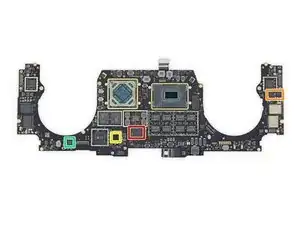
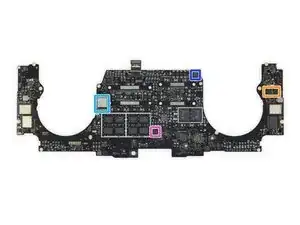
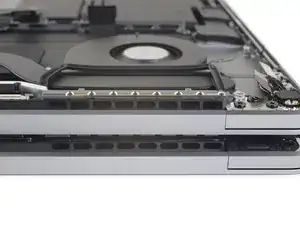
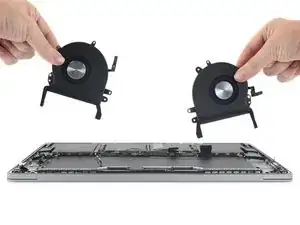

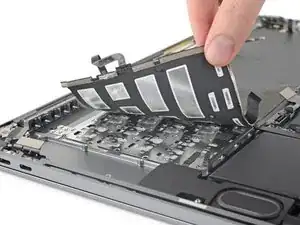
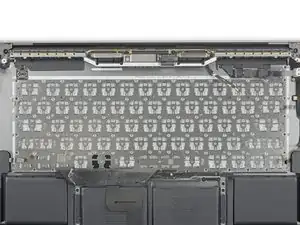
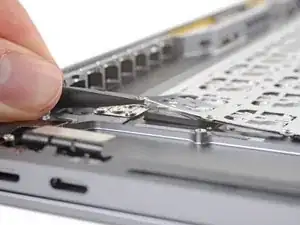
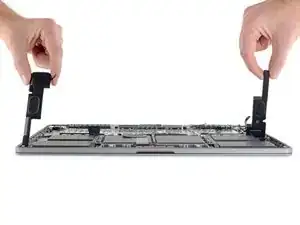
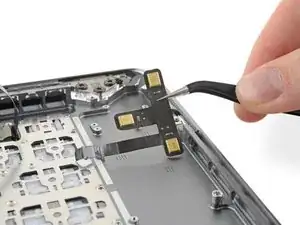
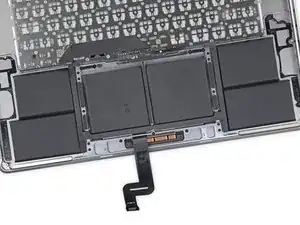


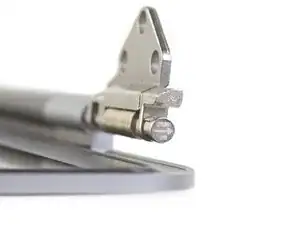
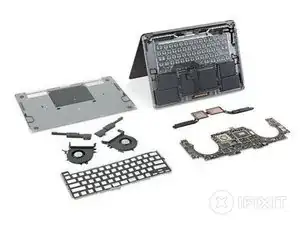
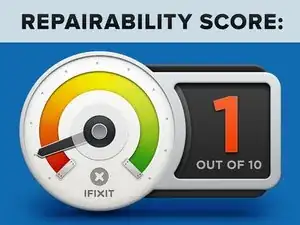

This video is blatantly erroneous and gave me just enough confidence in the wrong move as to (cosmetically only) damage the computer I am working on. It should be taken down immediately. If you dont know what I'm talking about consider getting a new job. "With a bit of force" smh. And I fell for it. The correct answer was buried under several copies of this same (well promoted and extremely bad) video. The correct answer is to pull the backplate towards the front of the computer NOT "WITH A BIT OF FORCE". I am wondering how many people have damaged their equipment as a result of this extremely amateur video coming from the people who make the toolkit I have in my hand.
Fix this please. Its embarrassing. For you.
Tyler Vega -